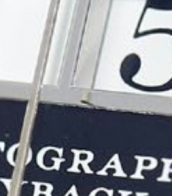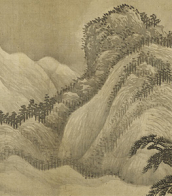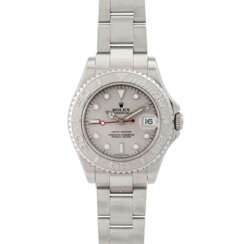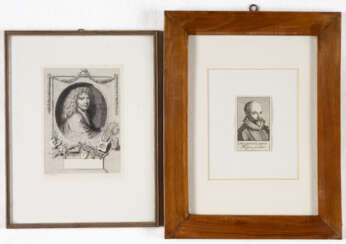622

Frans Pourbus the Younger was a Flemish artist, renowned for his sophisticated portraiture, who gained prominence for his meticulous depiction of opulent costumes, jewelry, and drapery. Born in Antwerp in 1569 into a family with a rich artistic lineage, Pourbus honed his craft in the vibrant cultural milieu of the time. His grandfather, Pieter Pourbus, was a leading portrait and history painter in Bruges, while his father, Frans Pourbus the Elder, was a significant figure in portrait and genre painting. The younger Pourbus’s artistry was characterized by its attention to detail rather than the exploration of dramatic scenes or landscapes, a style that resonated with the sensibilities of the courts he served.
Pourbus's career flourished as he became a court painter to influential figures such as Archduke Albert and Infanta Isabella in Brussels. His reputation for producing portraits that were aesthetically pleasing to his patrons propelled him to work for Vincenzo Gonzaga, Duke of Mantua, and subsequently, Marie de' Medici, Queen of France, in Paris. His works are preserved in prestigious collections across Europe, including the Louvre, the Prado, the Rijksmuseum, and the Metropolitan Museum of Art. Notable pieces such as the portrait of Eleonora de' Medici Gonzaga and the Infanta Isabella Clara Eugenia of Spain exemplify his skill in capturing the grandeur of the European aristocracy of the 17th century.
Art collectors and antiquities experts who admire the grandiose style of early European court portraiture find in Pourbus's work a quintessential representation of the era's aesthetics. His paintings, replete with detailed costume and adornment, provide a window into the past's lavishness and serve as enduring artifacts of cultural heritage. For updates on new product sales and auction events related to Frans Pourbus the Younger, signing up for our newsletter is a discreet and direct way to stay informed.




Quiringh van Brekelenkam or Quiringh Gerritsz. van Brekelenkam was a Dutch genre painter of the Golden Age.
He is known for his Baroque genre scenes of everyday life.

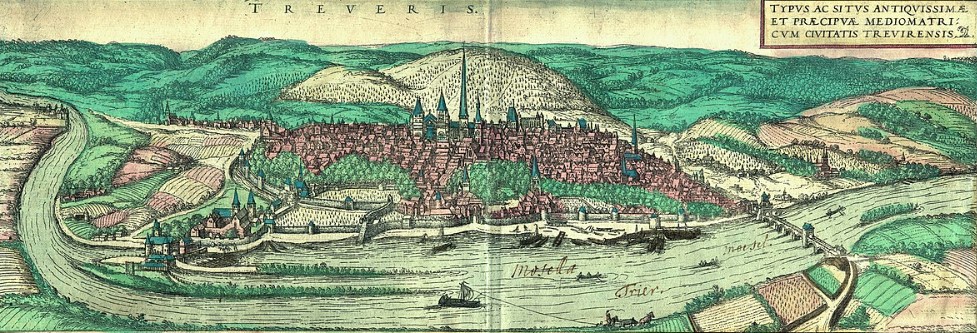
Frans Hogenberg was a Flemish and German painter, engraver, and mapmaker. He is known for portraits and topographical views as well as historical allegories. He also produced scenes of contemporary historical events. Hogenberg was the author of graphic works, engravings of city views and maps of the first four volumes of the six-volume atlas Theatrum Orbis Terrarum (Description and drawings of the most famous cities in the world), published in 1570 by the Flemish geographer Abraham Ortelius. Hogenberg's engravings are an invaluable source of information about urban development in medieval Europe.

Georg Braun was a German topographical geographer, cartographer and publisher.
Braun was the editor-in-chief of the Civitates orbis terrarum, a groundbreaking atlas of cities, one of the major cartographic achievements of the 16th century. It was the first comprehensive and detailed atlas, with plans of the world's famous cities and bird's-eye views, and became one of the best-selling works of the time.
The book was prepared by Georg Braun in collaboration with the Flemish engraver and cartographer Frans Hoogenberg. Braun, as editor-in-chief, acquired tables, hired artists, and wrote the texts. They drew on existing maps as well as maps based on drawings by the Antwerp artist Joris Hofnagel and his son Jacob. Other authors include Pieter Bruegel the Elder (c. 1525-1569), Jacob van Deventer (c. 1505-1575), and more than a hundred other artists and engravers.


Jan Abrahamsz Beerstraaten was a Dutch painter of marine art and landscapes, particularly of events of the First Anglo-Dutch War and Dutch-Swedish War.
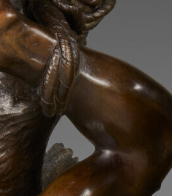

Carel Pietersz Fabritius was a Dutch painter of the Dutch Golden Age and one of Rembrandt's most talented pupils. He created portraits, genre scenes and historical paintings.


Frans Hogenberg was a Flemish and German painter, engraver, and mapmaker. He is known for portraits and topographical views as well as historical allegories. He also produced scenes of contemporary historical events. Hogenberg was the author of graphic works, engravings of city views and maps of the first four volumes of the six-volume atlas Theatrum Orbis Terrarum (Description and drawings of the most famous cities in the world), published in 1570 by the Flemish geographer Abraham Ortelius. Hogenberg's engravings are an invaluable source of information about urban development in medieval Europe.

Georg Braun was a German topographical geographer, cartographer and publisher.
Braun was the editor-in-chief of the Civitates orbis terrarum, a groundbreaking atlas of cities, one of the major cartographic achievements of the 16th century. It was the first comprehensive and detailed atlas, with plans of the world's famous cities and bird's-eye views, and became one of the best-selling works of the time.
The book was prepared by Georg Braun in collaboration with the Flemish engraver and cartographer Frans Hoogenberg. Braun, as editor-in-chief, acquired tables, hired artists, and wrote the texts. They drew on existing maps as well as maps based on drawings by the Antwerp artist Joris Hofnagel and his son Jacob. Other authors include Pieter Bruegel the Elder (c. 1525-1569), Jacob van Deventer (c. 1505-1575), and more than a hundred other artists and engravers.




Frans Hogenberg was a Flemish and German painter, engraver, and mapmaker. He is known for portraits and topographical views as well as historical allegories. He also produced scenes of contemporary historical events. Hogenberg was the author of graphic works, engravings of city views and maps of the first four volumes of the six-volume atlas Theatrum Orbis Terrarum (Description and drawings of the most famous cities in the world), published in 1570 by the Flemish geographer Abraham Ortelius. Hogenberg's engravings are an invaluable source of information about urban development in medieval Europe.

Georg Braun was a German topographical geographer, cartographer and publisher.
Braun was the editor-in-chief of the Civitates orbis terrarum, a groundbreaking atlas of cities, one of the major cartographic achievements of the 16th century. It was the first comprehensive and detailed atlas, with plans of the world's famous cities and bird's-eye views, and became one of the best-selling works of the time.
The book was prepared by Georg Braun in collaboration with the Flemish engraver and cartographer Frans Hoogenberg. Braun, as editor-in-chief, acquired tables, hired artists, and wrote the texts. They drew on existing maps as well as maps based on drawings by the Antwerp artist Joris Hofnagel and his son Jacob. Other authors include Pieter Bruegel the Elder (c. 1525-1569), Jacob van Deventer (c. 1505-1575), and more than a hundred other artists and engravers.

Simon Novellanus was a Dutch-born German artist, graphic artist and engraver who worked in Cologne in the second half of the 16th century.
He is known to have been a skilled engraver and collaborated with cartographer and engraver Franz Hogenberg in the production of books and atlases. Novellanus's sprawling, multi-layered landscapes are executed in a light and varied etching technique that creates intense light and atmosphere.


Jan Abrahamsz Beerstraaten was a Dutch painter of marine art and landscapes, particularly of events of the First Anglo-Dutch War and Dutch-Swedish War.

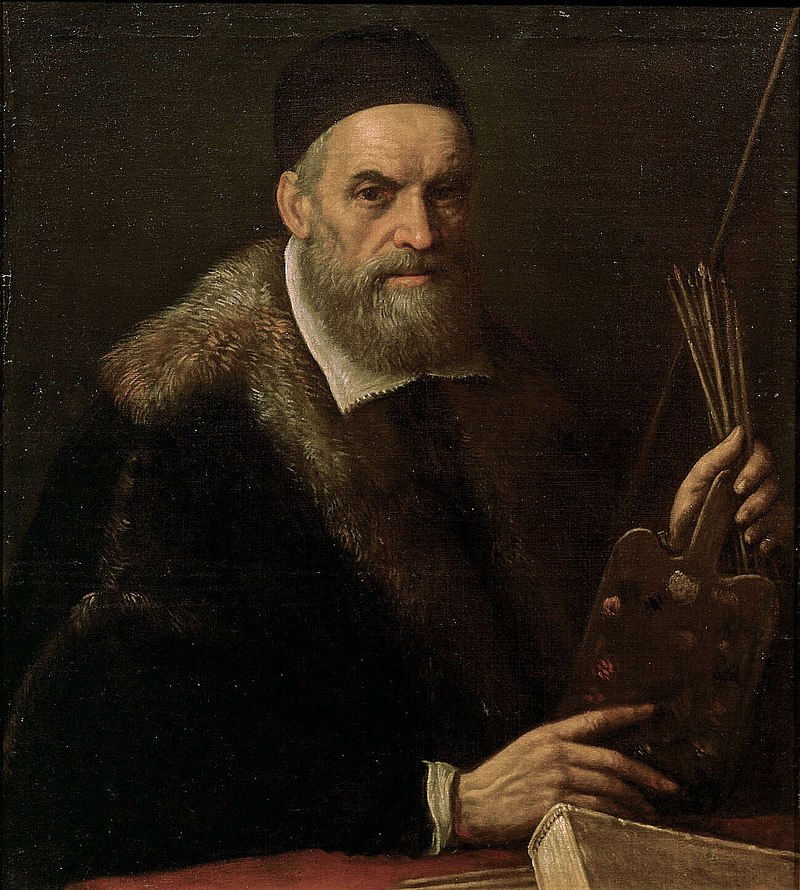
Jacopo Bassano, known also as Jacopo dal Ponte, was an Italian painter who was born and died in Bassano del Grappa near Venice, and took the village as his surname. Trained in the workshop of his father, Francesco the Elder, and studying under Bonifazio Veronese in Venice, he painted mostly religious paintings including landscape and genre scenes. He often treated biblical themes in the manner of rural genre scenes, portraying people who look like local peasants and depicting animals with real interest. Bassano's pictures were very popular in Venice because of their depiction of animals and nocturnal scenes. His four sons: Francesco Bassano the Younger, Giovanni Battista da Ponte, Leandro Bassano, and Girolamo da Ponte, also became artists and followed him closely in style and subject matter.



Johann(es) Lingelbach was a Dutch Golden Age artist who worked in the bamboochade genre.
He first studied painting in Holland, from 1642 in Paris and from 1644 in Rome. The influence of Philippe Vovermann is noticeable in Johannes works. He is known for his numerous landscapes and war scenes, in which the influence of Italian painting is perceptible. He worked for other painters as well, painting their canvases with different details, backgrounds and animals.

